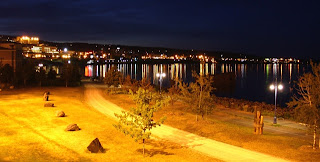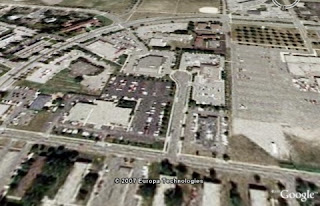Burks Oakley and Ray Schroeder created a list of Top 20 Technologies.
This is a great compilation of sites! I've added a brief description of the functions/services each site provides.
- Blogger http://blogger.com/
blog (digital diary) site - PBWiki http://pbwiki.com/
wiki (online collaborative webpage that groups can edit, similar to WikiPedia) - Podomatic http://www.podomatic.com/
podcasts (user-created "TV/Radio station" in which users create and delivery their own online video and audio programming) - Flickr http://www.flickr.com/
photo-sharing site - Google Docs http://docs.google.com/
collaborative word-processing and spreadsheets - Google Calendar http://www.google.com/calendar/
collaborative calendar allowing users to share schedule and events with others - GooglePages http://googlepages.com/
web page creation and hosting using built-in WYSIWYG editor - Del.icio.us http://del.icio.us/
public bookmarking of webpages; tagging of pages to quickly find similar content - MySpace http://www.myspace.com/
social-networking software allowing personal profiles and "about me" information - Citizendium http://www.citizendium.org/
online and "reliable" encyclopedia using expert editors to write and review content - YouTube http://www.youtube.com/
free video clip hosting service encouraging users to post original videos plus video-clip (webcam) feedback to other users - Gliffy http://gliffy.com/
create flowcharts, process diagrams, and room layout diagrams (similar to Microsoft Visio) - Skype http://www.skype.com/
Voice Over Internet Protocols (VOIP) - allows computer-to-computer phone calls for free, or computer to land-line and "voice-conferencing" (up to 10 lines) for modest expense ($29.99 per year for unlimited calling; additional SkypeIn number for $60 per year allows a "phone number" for land-lines to call your computer/voicemail) - Kartoo http://www.kartoo.com/
Visual-based web search engine, showing results in spatial diagrams with interconnecting web-lines - Elluminate vRoom http://www.elluminate.com/vroom/
Web conferencing/collaboration with up to 3 individuals (free) - Second Life http://www.secondlife.com/
Virtual world in which you create a character and interact with other characters - Odeo http://www.odeo.com/
Audio podcast hosting site allowing users to post music, lectures, and audio shows. - Digg http://www.digg.com/
Dynamic news site. Stories "rise in the ranks" depending upon how many users "digg" that story. - Xdrive http://www.xdrive.com/
online backup site to securely store up to 5GB of content (photos, video, music, documents) - zoho http://zoho.com/
online-based office suite (similar to Microsoft Office / Open Office) which also includes tools for Wiki, project planning, and web conferencing






